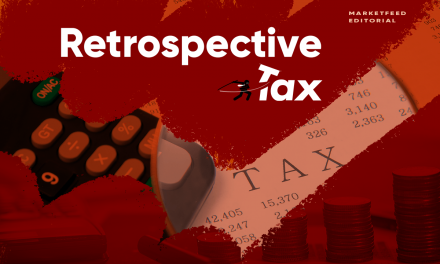Indian Economy and COVID-19’s second wave


Digant Shetkar
As we enter the second half of the year and the second wave of COVID-19 starts to ebb, we look at its impact on the Indian economy. The vaccination program remains a vital factor influencing the course of the economy, along with the Indian fiscal deficit, trade situations, and the possible end of the US quantitative easing. We take a look at each of these factors and how they could affect the economy going forward.
COVID-19 Second Wave
As with every economy, in India too a major factor for recovery is the vaccination drive. India was hit by the second wave of COVID-19 which peaked in the second week of May but has since calmed considerably due to lockdowns and vaccinations. Daily new infections (48,698) stand at 1/8th of that during the peak. Moody’s has said that the effects of the second wave may be softer and limited to the June quarter.
Although the vaccination effort is being sped up, it may not be enough to prevent a third wave as the shortage of vaccines themselves remains an issue. Despite halting all vaccine exports since April and reporting record-high numbers of vaccines administered in a day on June 24th (8.616 million), India is still behind on its goals and may have to deal with a deadly third wave.
There have been reports suggesting that the “record” number of vaccinations of 8.616 million came from administering lesser doses before and after June 24th. That suggests an attempt to downplay the shortage of vaccines.
After facing pushback from State Governments and the Supreme Court, the Modi government revised its vaccine distribution policy and shifted to a model where the Central Government would go back to procuring 75% of the vaccines and in addition will provide vaccines free to everyone over the age of 18 years from 21st June 2021. The move comes after several letters from opposition-ruled States and the Supreme Court’s scathing remarks on the Liberalised Vaccination Policy. The decision was celebrated by opposition leaders and CMs who credited the Supreme Court.
Some of the major criticisms of the vaccination policy include:
- Why were states left on their own to procure vaccines when most companies had declared that they would be dealing only with the central government and not the state governments.
- Why the vaccines were not free from the start.
- Where did the Rs. 35,000 crores earmarked for vaccines go?
Another major cause for concern was the lack of foresight in the procurement of vaccines evident from the extremely late orders for vaccines.
A look at the economy
The Indian economy looks to be recovering if one looks at the quarterly growth figures, however, it is also true that it shrunk by 7.1% in 2020. Moody’s states that the effect of the second wave would be limited to the June quarter and softer in comparison to that of the first wave. While the growth largely depends on the success of the vaccination program, let’s look at some of the other factors influencing the fate of India.
As some developed countries reach a significant point on their way to recovery, many expect some of the accommodative policies to go away impacting global trade. One such area of concern is the tapering of quantitative easing in the United States which might start in August. Quantitative easing is a policy under which money supply is greatly increased by buying government bonds and even stocks. This leads to a lowering of interest rates and thus further boosting economic activity. When quantitative easing tapered off after the Great Recession of 2008, there were adverse effects on developing economies like India. The consequences of such a move on the Indian economy are difficult to predict.
While some economic indicators are in better shape, there are concerns regarding fiscal and public debt. India had a trade surplus in 2020, forex reserves are better than those in 2013, and even though inflation is rising, it’s lower than that in 2013. However, government expenditure accounted for most of the growth while consumer expenditure declined. As this policy is allayed, another area for concern is that the dollar might strengthen, weakening the position of the rupee, which had been doing relatively well.
In the first quarter of 2021, UN data shows that India is among the few countries that did better than the major economies at trade, with import and export growing 45% and 26%. The manufacturers have fared better than they did in 2020; on the other hand, the exporters face a lot of trouble delivering goods on time. The freight prices rose as an effect of the shortage of containers and the increase in demand. Indian sailors are denied entry into some ports due to fear of the spread of COVID. As the developed economies recover, the increased demand coupled with a shortage of containers and the subsequent rise in freight prices is hurting exporters. Estimates suggest a 100% increase in freight prices.
Despite the prevailing conditions, the numbers do seem encouraging. In April 2021, Indian exports increased three times from $10.36 billion in 2020 to $30.63 billion. Purchasing Managers Index (PMI), measures the direction of the economic trends in manufacturing, indicated that the economic conditions for manufacturing remained favorable and were backed up by an increase in demand.
Even as experts warned of swings in demand caused by COVID and its management, some remain optimistic about the sharp increase in orders for Indian exports and improvements in the manufacturing sector.
The factors affecting exports and freight are unlikely to go away in the near future. It can’t be stressed enough that the direction that the Indian economy will take depends heavily on the vaccination programs and their efficiency.
Digant Shetkar a graduate of Jai Hind College, Mumbai University. He is a columnist with The Policy Observer.(The opinions expressed in this publication are those of the author/s. They do not purport to reflect the opinions or views of The Policy Observer or our members.)
Related Articles
The blunder of retrospective tax
The current crisis has hit the poor and corroded their savings. It is crucial to provide relief to the poor not only because of the intrinsic value of alleviating the effects of poverty but also because of their high spending propensity. A demand deficiency existed even before the COVID-19 pandemic which has only worsened.
Indian and Chinese Economies Post-liberalisation
It is important to acknowledge that the works have limited scope as we embark on understanding the crucial differences. Many questions have remained unanswered in terms of why there is such a difference. The two subsequent works following Desai have probably intended to focus on “what” are the differences rather than “why”. In the case of Desai, the issue seems to have been taken up more broadly instead of reflecting on its complex character. For example, much less attention has been paid to the incentives that FDIs found in China as compared to India.
Feasibility of Vaccinating India
Having just tided over the Second Wave of COVID-19 and after going through prolonged lockdowns, the Third Wave must be prevented as much as possible. The effects of which may drive India’s double crisis to further extremes. However, looking at the vaccination effort and the sluggish attitude towards the procurement of vaccines, the situation looks grim.








